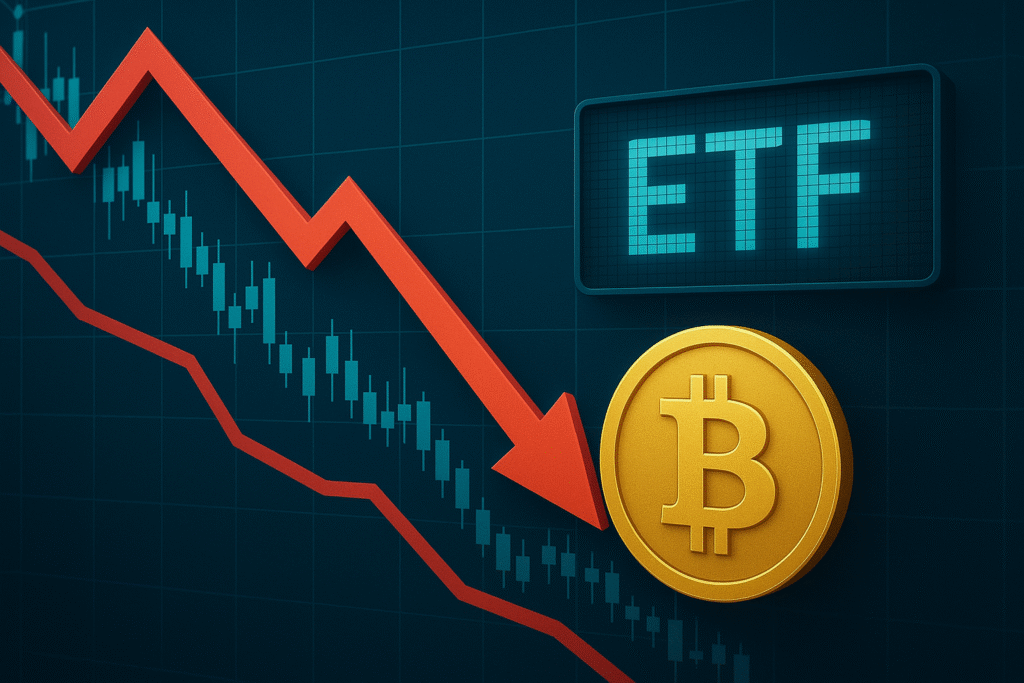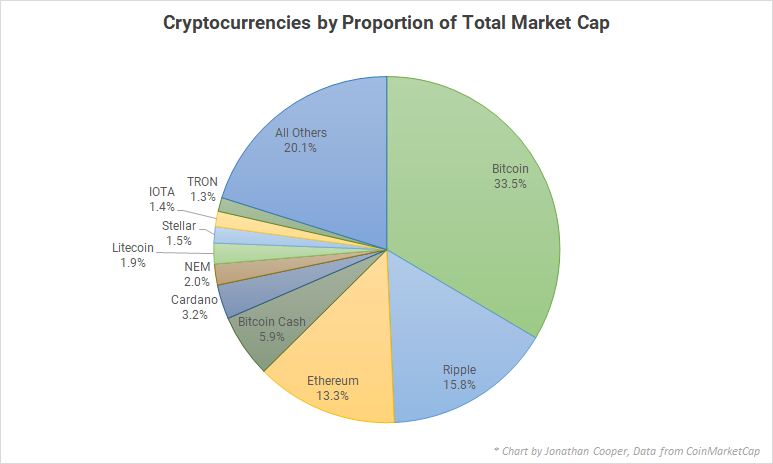Introduction
Bitcoin has seen meteoric rises and steep falls in price over the years. Many investors wonder if there is a way to profit from Bitcoin’s price drops without directly shorting the cryptocurrency. This is where the Bitcoin short ETF comes into play. A Bitcoin short ETF is a specialized exchange-traded fund that goes up in value when Bitcoin’s price goes down, allowing traders to bet against Bitcoin’s price movements. In this article, we explore what a Bitcoin short ETF is, how it operates, why investors use it, and the risks involved. By understanding the ins and outs of these funds, you can better decide if they fit into your investment strategy.
What exactly is a Bitcoin short ETF? Simply put, it’s an ETF designed to move inversely to the price of Bitcoin – if Bitcoin loses value on a given day, the Bitcoin short ETF aims to gain value in roughly the same proportion (Hayes, 2023). This provides a convenient way for investors to short Bitcoin (i.e. profit from price declines) through a traditional brokerage account without having to handle cryptocurrency directly or engage in complex short-selling techniques.
What Is a Bitcoin Short ETF?
A Bitcoin short ETF (Exchange-Traded Fund) is an investment fund traded on stock exchanges that delivers the inverse performance of Bitcoin’s price. In practice, this means the fund’s value is intended to rise when Bitcoin’s market price falls, and vice versa. Unlike a standard Bitcoin ETF that would track Bitcoin’s price directly, a Bitcoin short ETF tracks opposite movements. These funds achieve the inverse performance by using financial derivatives such as futures contracts, options, or swaps tied to Bitcoin prices (Nickolas, 2022). Essentially, the ETF takes a short position on Bitcoin – if Bitcoin’s price drops, the short position gains value, which the fund reflects as a rise in its share price.
How is this implemented in reality? For example, the first U.S. Bitcoin short ETF, the ProShares Short Bitcoin Strategy ETF (ticker: BITI), was launched in June 2022 (Oladipupo, 2022). This ETF does not hold Bitcoin directly; instead, it holds Bitcoin futures contracts in a way that yields a -1× daily return relative to Bitcoin’s price movements. If Bitcoin’s benchmark price index falls by 5% on a given day, a fund like BITI aims to rise by approximately 5% that day (before fees and expenses). Conversely, if Bitcoin’s price jumps 10%, the Bitcoin short ETF would be expected to drop about 10%. The fund manager achieves this inverse exposure by shorting Bitcoin futures or using swap agreements that pay off when Bitcoin’s price declines.
It’s important to note that these inverse ETFs are typically designed for daily performance goals. The -1× inverse relationship is usually recalibrated at the end of each trading day. Over longer periods, the returns of a Bitcoin short ETF may diverge from perfectly inverse performance of Bitcoin due to daily compounding effects and fund expenses. For instance, holding a short ETF over many days during volatile swings can lead to erosion of value even if Bitcoin ends up not far from the starting price, because the fund’s daily rebalancing causes a compounding impact (Nickolas, 2022).
Below is a simple illustration of how a Bitcoin short ETF might perform relative to Bitcoin on single-day moves:
| Bitcoin’s Daily Price Change | Bitcoin Short ETF’s Daily Change (Target) |
|---|---|
| -5% (Bitcoin falls in value) | +5% (ETF rises in value) |
| +5% (Bitcoin rises in value) | -5% (ETF falls in value) |
| +0.5% (Bitcoin slight rise) | -0.5% (ETF slight fall) |
| -1% (Bitcoin slight drop) | +1% (ETF slight gain) |
Table: Illustrative inverse relationship between Bitcoin and a Bitcoin short ETF on a daily basis.
In summary, a Bitcoin short ETF is structured to deliver the inverse of Bitcoin’s daily performance, offering investors a handy tool to bet against Bitcoin’s price without directly shorting cryptocurrencies.
Why Investors Use Bitcoin Short ETFs
Investors and traders may choose a Bitcoin short ETF for several reasons:
- Hedging Portfolio Risk: If you already hold Bitcoin or other crypto assets, you might purchase a Bitcoin short ETF to hedge against potential price declines. For example, if you’re concerned about a near-term drop in Bitcoin, holding a small position in an inverse Bitcoin ETF could offset some losses if Bitcoin’s price falls.
- Speculating on Price Drops: Some traders have a bearish view on Bitcoin’s price in the short term. A Bitcoin short ETF provides a straightforward way to speculate on Bitcoin’s price going down. It allows bearish investors to express their outlook without needing to use margin or borrow Bitcoin (as would be required in traditional short-selling).
- Simplicity and Convenience: Shorting Bitcoin directly can be technically complex – it might involve borrowing Bitcoin on a crypto exchange, using margin, or dealing with futures contracts. In contrast, buying shares of a Bitcoin short ETF is as easy as buying any stock or ETF through a brokerage. This lowers the barrier to entry for inverse exposure. Importantly, it brings Bitcoin short exposure into familiar investment accounts like IRAs or 401(k)s, where direct crypto trading might not be possible.
- Limited Risk (for the Investor): When you short an asset directly, losses can be unlimited if the asset’s price soars. With a Bitcoin short ETF, you cannot lose more than the money you invested in the ETF shares. If Bitcoin’s price surges, the ETF will drop, but you won’t owe money – you’d simply lose some of the capital invested in the ETF (at worst, the ETF could go to zero, but you wouldn’t owe additional funds). This defined-risk profile is appealing for those wary of shorting Bitcoin outright.
- No Need for Crypto Custody: Some investors want to bet against Bitcoin’s price without dealing with cryptocurrency wallets, exchanges, or custody of digital assets. A Bitcoin short ETF settles in cash and is regulated on traditional exchanges, so investors can avoid the complications of handling actual Bitcoin, such as setting up a crypto wallet or the counterparty risk of crypto exchanges.
For example, during mid-2022 as the crypto market entered a bear phase, short Bitcoin investment products saw a significant increase in inflows. In one week of June 2022, funds betting against Bitcoin saw record inflows – a sign that many investors were seeking profit from the price decline (Sriram, 2022). Products like the Bitcoin short ETF gave these investors an accessible way to do so. In essence, a Bitcoin short ETF is one more tool in the growing set of crypto-linked financial instruments that traders can use to express their market views.
Risks and Considerations
While Bitcoin short ETFs can be useful, they come with important risks and considerations:
- Short-Term Trading Vehicle: Inverse ETFs (including Bitcoin short ETFs) are generally intended for short-term or tactical trading, not long-term holding. Their daily reset feature means that holding them over longer periods, especially through volatile markets, can lead to compounding effects that deviate from the expected inverse performance. Investors who hold a Bitcoin short ETF for multiple days or weeks must monitor their position closely and understand that returns over time may not exactly mirror a simple inverse of Bitcoin’s cumulative change (Nickolas, 2022).
- Compounding and Volatility Decay: Because the fund rebalances daily to maintain its -1× exposure, volatility in Bitcoin’s price can cause the ETF’s performance to drift. For instance, if Bitcoin goes up 10% one day and down 10% the next day, it will be roughly 1% lower than where it started. However, an inverse fund could end up slightly below its starting value in that scenario due to how percentages and daily resets work. High volatility can therefore erode the value of both leveraged and inverse ETFs over time, a phenomenon often called volatility decay or beta slippage.
- No Upside Participation: If Bitcoin enters a long-term bull market and rises significantly, holding a short ETF will produce losses. Unlike holding cash or avoiding the market, a short ETF will decline in value when Bitcoin’s price rallies. Therefore, having a Bitcoin short ETF is fundamentally a bearish stance. Investors need to be confident in their bearish view or use it only for temporary hedging. Over the long run, if Bitcoin’s price appreciates, a short ETF would be a losing position.
- Derivative Risks: Bitcoin short ETFs use derivatives like futures, which introduce their own risks. Futures contracts must be rolled over as they expire, potentially leading to costs or tracking error. There’s also counterparty risk if swaps are used – the possibility that the counterparty to the swap could default. Additionally, the ETF’s performance can be affected by futures market liquidity and contango (when futures prices are above spot prices) which can gradually eat away at returns for short or long funds.
- Expense Ratios and Fees: These specialized ETFs typically carry higher expense ratios than plain index funds or even regular Bitcoin ETFs. The daily rebalancing and use of derivatives add to management costs. High fees can drag on returns, especially if you hold the fund for an extended period. Always check the fund’s expense ratio – and remember that those fees apply regardless of the fund’s performance.
- Regulatory and Market Risk: Bitcoin’s market is known for sudden news-driven moves. Regulatory changes (for example, a government announcing a crackdown on crypto trading) can cause rapid spikes or crashes in Bitcoin’s price, which in turn will whipsaw a short ETF. There’s also the risk that if Bitcoin skyrocketed by an extreme amount in a single day, an inverse ETF could potentially suffer outsized losses. Fund providers typically have safeguards, but in theoretical extreme cases, an inverse ETF could even liquidate if the underlying moves too violently in the opposite direction.
In summary, a Bitcoin short ETF is best used as a short-term instrument or hedge. It’s crucial to use stop-loss orders or have a clear exit plan. These ETFs are not generally suitable for a simple “buy and hold” strategy, because prolonged holding can yield unpredictable results compared to the ETF’s stated daily objective.
Examples of Bitcoin Short ETFs
Bitcoin short ETFs are relatively new products, but a few notable examples exist:
- ProShares Short Bitcoin Strategy ETF (BITI): This U.S. ETF launched in June 2022 and is the first of its kind in American markets. It uses Bitcoin futures to provide -1× daily return relative to the S&P CME Bitcoin Futures Index. BITI offers investors a regulated way to bet against Bitcoin’s price. Upon launch, ProShares stated that BITI “provides a way for investors to potentially profit from a decline in the price of Bitcoin or hedge their cryptocurrency exposure” in a traditional ETF format (Oladipupo, 2022). BITI saw moderate uptake initially; interestingly, its debut coincided with Bitcoin hitting an 18-month price low, and some analysts noted that ProShares “mistimed” the launch as the worst of the downturn had just occurred. Still, BITI attracted investors and by mid-2022 had accumulated tens of millions in assets as bearish sentiment grew.
- 21Shares Short Bitcoin ETP (SBTC): In Europe, the 21Shares Short Bitcoin ETP was introduced on the Swiss SIX exchange in January 2020, marking the world’s first regulated inverse Bitcoin exchange-traded product (Zmudzinski, 2020). This ETP provides -1× daily exposure to Bitcoin’s price by borrowing Bitcoin and selling it short through the product’s structure. It gave European investors early access to a Bitcoin short vehicle on a traditional stock market. The SBTC ETP later also listed on German and other European exchanges. Its existence since 2020 demonstrates that the idea of short exposure to Bitcoin in exchange-traded form has been around even before the U.S. allowed such ETFs.
- Bitcoin Futures Inverse Products: Beyond ETFs, some other investment products offer inverse Bitcoin exposure. For example, certain exchange-traded notes (ETNs) or structured products in various markets function similarly – allowing investors to short Bitcoin’s price. However, these can carry credit risk of the issuer. Additionally, some cryptocurrency exchanges offer inverse swap contracts or leverage tokens that go up when Bitcoin goes down. Those are outside the scope of ETFs but are alternatives available in the crypto derivatives space.
It’s worth noting that as of 2025, Bitcoin short ETFs remain much less common than “long” Bitcoin ETFs or trusts that hold Bitcoin. The crypto market’s overall upward bias over the past decade meant fewer products were created betting on declines. However, the volatility of Bitcoin also means there is demand for these tools when bearish periods arrive. For instance, during the 2022 crypto bear market, inverse products like BITI and SBTC gained traction, and investor inflows into short Bitcoin funds hit record levels at times (Sriram, 2022). We may see more such funds launched in the future as the cryptocurrency ecosystem matures and more sophisticated trading strategies enter the mainstream.
Conclusion
A Bitcoin short ETF is an innovative financial tool that enables investors to bet against Bitcoin’s price within the convenience of a traditional brokerage account. It provides inverse exposure, rising when Bitcoin falls, by utilizing derivatives like futures. Investors use Bitcoin short ETFs for hedging or speculation, finding them convenient and limited in risk compared to direct shorting. However, these funds come with significant caveats: they are generally short-term instruments, subject to compounding risk and higher fees, and their performance can diverge from expectations if held long-term or through volatile markets.
As with any investment related to cryptocurrencies, due diligence is key. If you anticipate a downturn in Bitcoin and choose to use a Bitcoin short ETF, ensure you monitor it regularly and have an exit plan. These ETFs underscore the growing maturity of crypto-linked markets – offering sophisticated options like inverse exposure – but they also remind us of Bitcoin’s notorious volatility. In the fast-evolving crypto investment landscape, a Bitcoin short ETF is a double-edged sword: a potentially profitable opportunity for bearish bets or hedges, and simultaneously a product to handle with care and caution.
Also read: https://cryptoidolo.com/ripple-price-prediction/

References
Hayes, H. (2023, July 13). What Is Bitcoin Short ETF? BitKan. (Definition of Bitcoin Short ETF as an inverse investment vehicle.) https://bitkan.com/learn/what-is-bitcoin-short-etf-which-bitcoin-etf-is-the-largest-15932
Nickolas, S. (2022, January 24). The Risks of Investing in Inverse ETFs. Investopedia. (Discusses compounding risk and other challenges of inverse ETFs.) https://www.investopedia.com/articles/investing/092815/risks-investing-inverse-etfs.asp
Oladipupo, S. (2022, June 20). ProShares to Unveil First US Short Bitcoin-Linked ETF. Finance Magnates. (Details the launch of the BITI ETF and its purpose.) https://www.financemagnates.com/cryptocurrency/proshares-to-unveil-first-us-short-bitcoin-linked-etf/
Sriram, S. (2022, July 5). ‘Short-Bitcoin’ Funds See Record $51M Inflows In a Week. Benzinga. (Reports surge in inflows to short Bitcoin funds during market downturn.)
Zmudzinski, A. (2020, January 23). Amun Launched Short Bitcoin ETP on Leading Swiss Exchange SIX. Cointelegraph. (Announcement of the first inverse Bitcoin ETP in Switzerland.) https://cointelegraph.com/news/amun-launched-short-bitcoin-etp-on-leading-swiss-exchange-six


